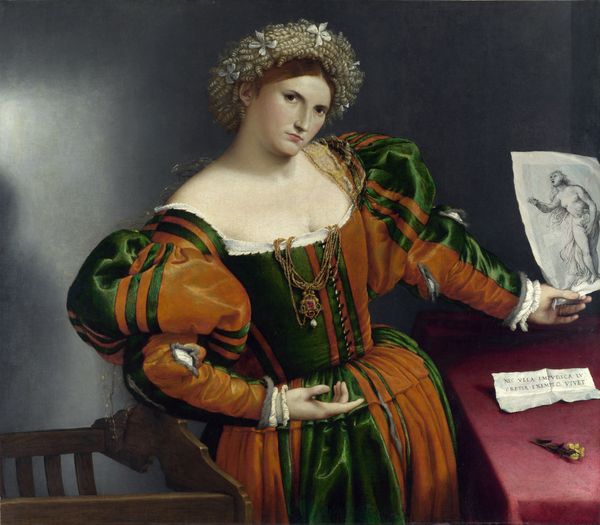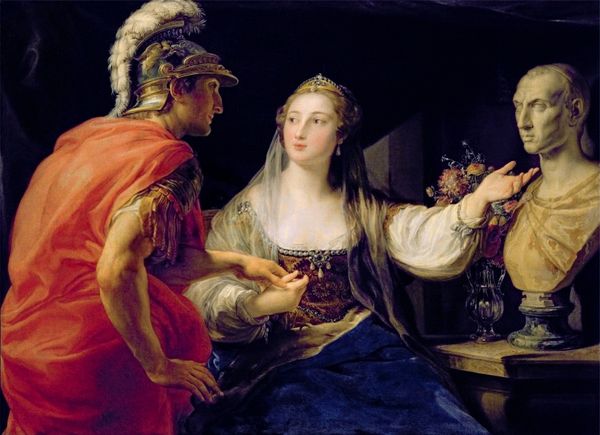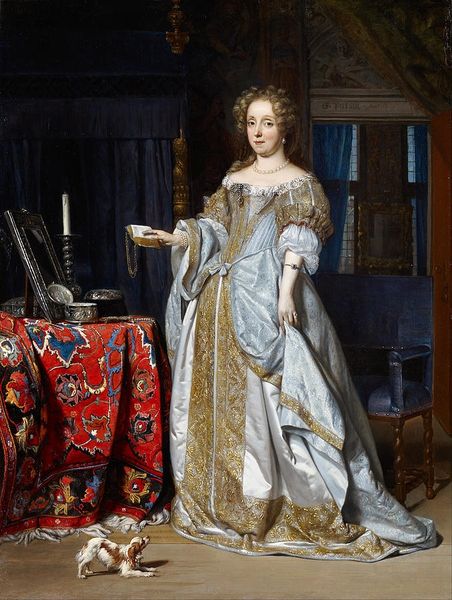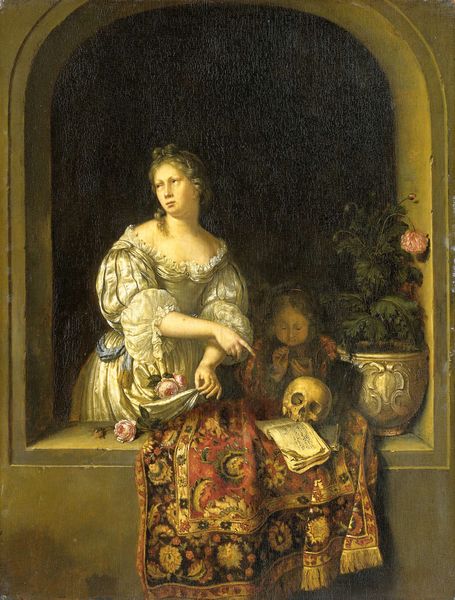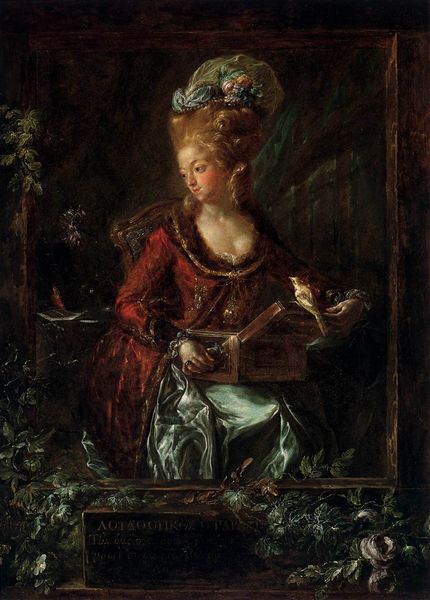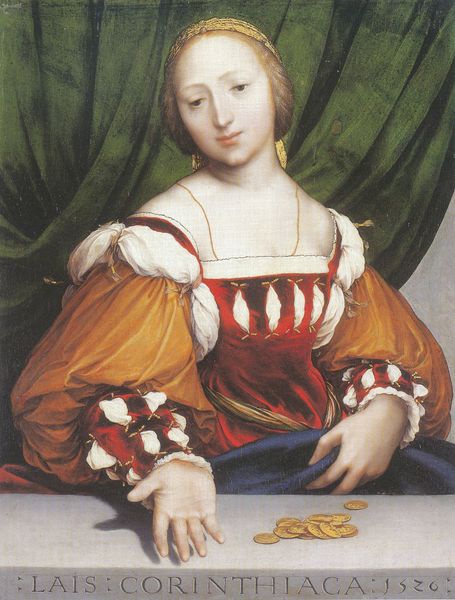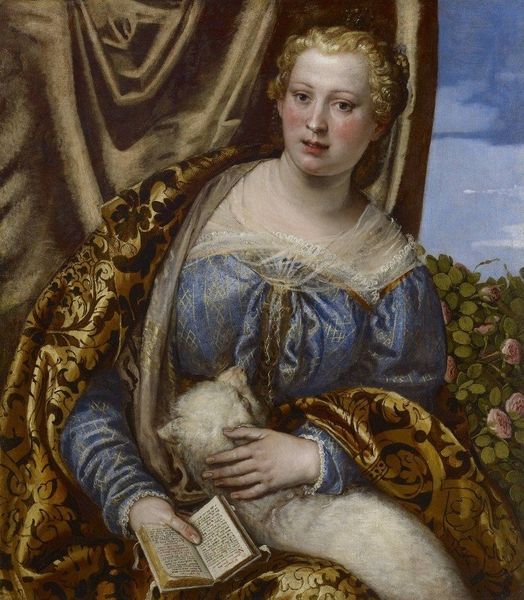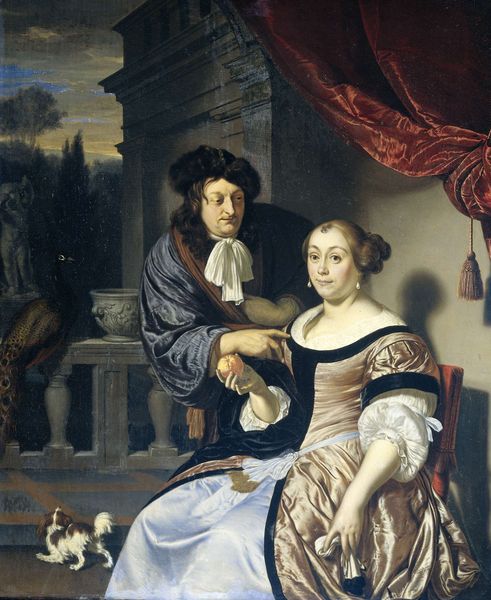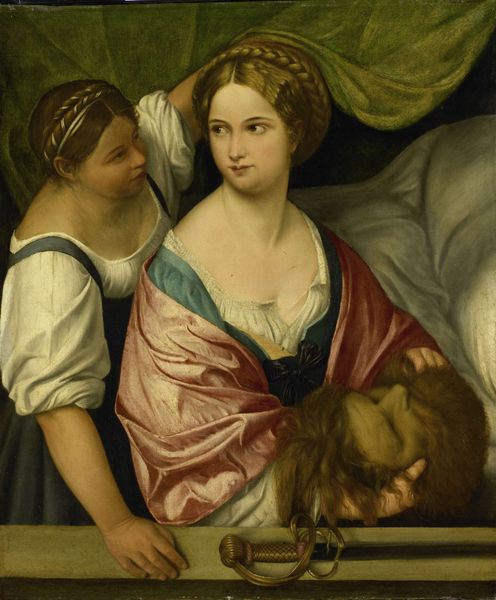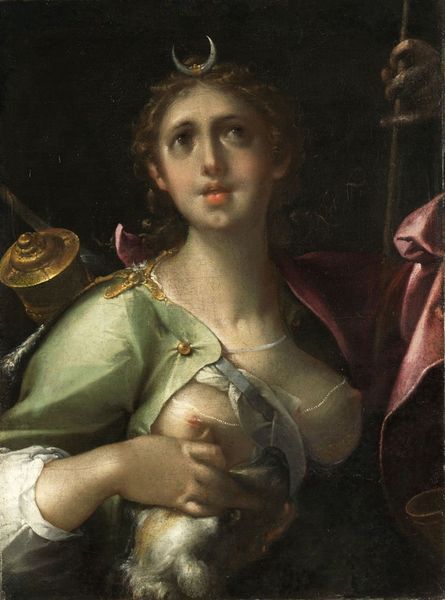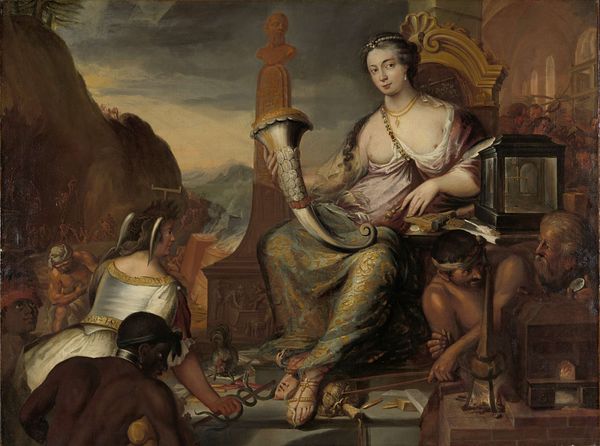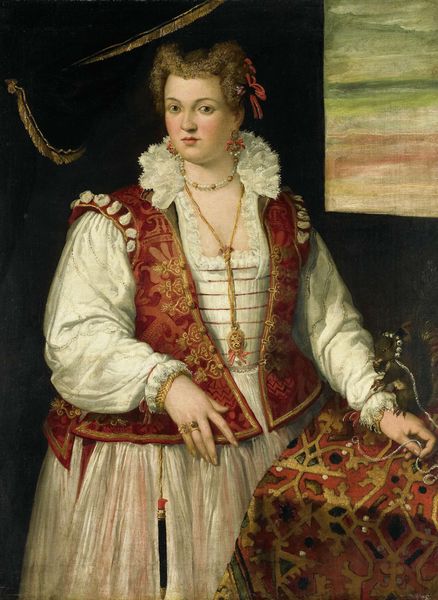
oil-paint
#
portrait
#
baroque
#
oil-paint
#
vanitas
#
genre-painting
#
realism
Copyright: Public domain
Curator: Look at this captivating “Vanitas” painted in 1613 by Clara Peeters. It's oil on panel, and really makes you think about mortality, doesn't it? Editor: Wow, it hits you right away, doesn't it? This isn't just about old bones; it's about *her*. That searching gaze. It's as if she knows, at her peak beauty, everything’s already fading. Makes me want to paint myself, dripping with glitter glue, then watch it all dry up and flake off! Curator: Exactly. It's rooted in the visual traditions of vanitas still life, where objects symbolize the transience of life, beauty, and earthly pleasures. Consider how the objects tell the story of wealth and achievement juxtaposed with symbolic objects of human condition. It reveals cultural anxieties around the themes of death and temporality. Editor: Well, sure, it is about being Dutch and 17th century and thinking you were hot stuff. I get that... but that lone bubble! Like the teeniest ghostie or thought balloon, drifting upward... That little bubble floating behind her should get credit for speaking the loudest. Pop! And the way those dice sit by her right hand are great, very heavy. Curator: I read it differently. The "Vanitas" theme also offered a complex framework through which gender and morality intersected. We have a clear expression of Peeters as a female artist subtly critiquing the opulent lifestyle she depicts. Look at the way her direct gaze subverts traditional passive roles expected of women in portraits. Editor: Maybe! I see someone negotiating beauty standards with these weird objects… You know, staring into her compact like, “Am I making the most of my temporal earthly coil?” The compact isn't even the cool oval one; it's like she couldn’t even get that shape. Still though... Peeters lets us peek over her shoulder as she considers what is at stake in presenting herself to the world. Also... what is with those teeny flower bunches, could they have seemed corny even then? Curator: The presence of ephemeral items combined with an inventory of earthly treasures makes her exploration all the more compelling when contextualized in ongoing scholarly re-evaluations of Early Modern gender and class. Editor: All that from flowers?! In conclusion: the lady wonders whether people see past all her things… She needs more flowers. Curator: I think your artistic instincts allowed us a nuanced appreciation of the visual language within larger cultural narratives. Editor: Glad to help unpack! Even I didn't realize my magpie mind was absorbing *so much* cultural capital.
Comments
No comments
Be the first to comment and join the conversation on the ultimate creative platform.
